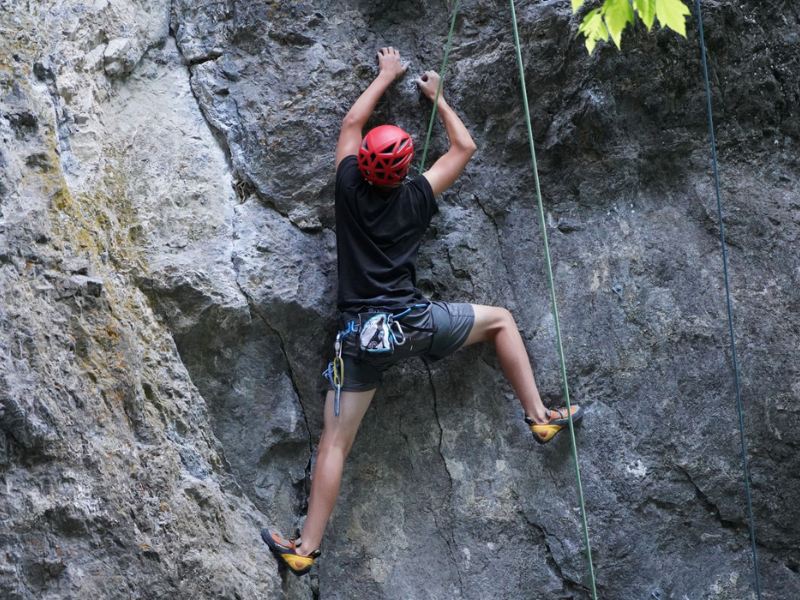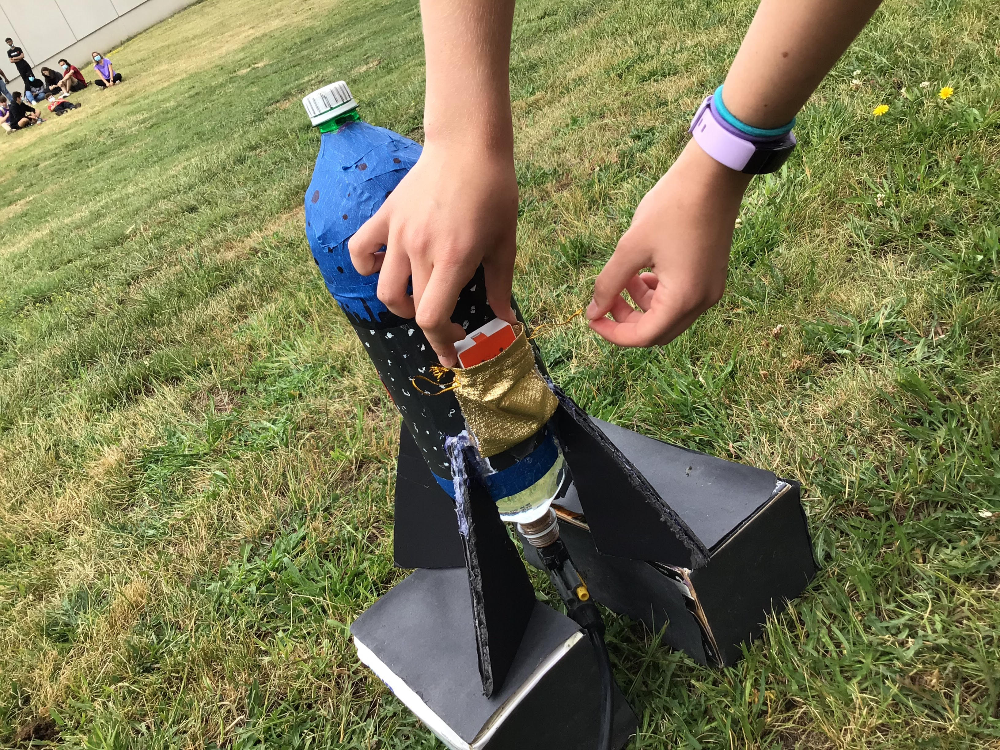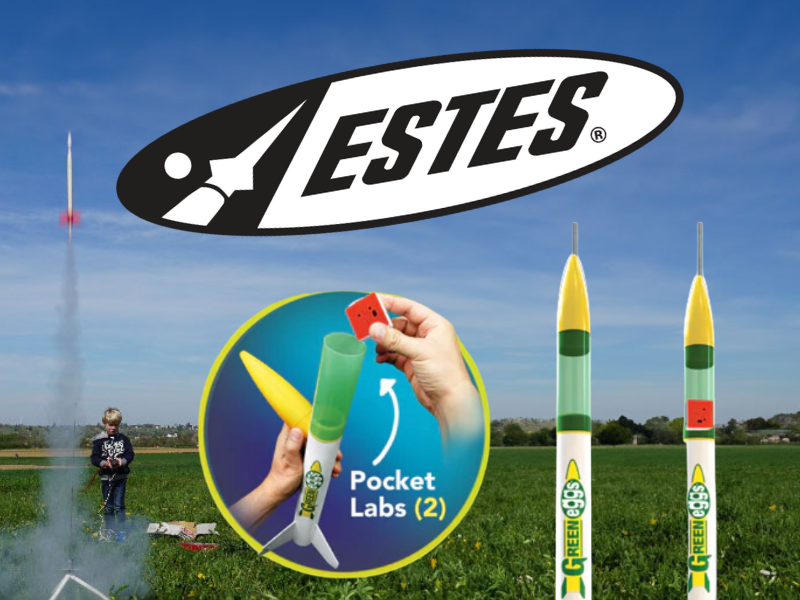Exploring STEM with Water Rockets at St-Lambert Intl. High School
At St-Lambert International High School in Canada, 8th-grade students embarked on an exhilarating scientific journey by launching homemade water...
3 min read
Cool Things Being Done With PocketLabs Jun 21, 2023 4:28:26 PM

Hello teachers and science enthusiasts! Today, we delve into the exhilarating domain of sports science, spotlighting the compelling and demanding discipline of rock climbing, particularly the science of climbing. This article will elucidate how PocketLab sensors, an affordable and resilient tool for science classrooms, played a crucial role in a pioneering study on the mechanics and science of climbing falls.
Ever pondered how a minor slip can morph into a heart-stopping plunge for climbers? This was one of the many enigmas that researchers (Nico F. Schad, Yannick F. Schad, Chip Garret, Alex Voris, Heike Schad, and Rainer Schad) sought to investigate in their study "Experimental Analysis of the Mechanics of Sport Climbing Falls."
This groundbreaking work, published in the Journal of Engineering Research and Reports, employed real-world data, captured by PocketLab sensors, to study the impact of fall mechanics on the climbers and their belayers while illuminating the science of climbing.
The experiment unfolded on the third bolt of a well-guarded climbing route. Researchers equipped both the climbers and belayers with a PocketLab Voyager sensor. These sensors are lightweight, adaptable, and capable of recording several data types, including acceleration, pressure, temperature, and more.
These sensors were utilized to monitor fall intensity, the force exerted during the fall, and the movements of the climber and belayer. This data proved instrumental in understanding the real-world dynamics of climbing falls. The results indicated that the risk of ground falls persists much higher into a climb than previously assumed.
One of the key findings from the study was that the actual fall distance was greater than most climbers anticipate and that the risk of hitting the ground was present even at the third bolt. This was not just because of rope stretch, but also due to factors like the belayer being lifted off the ground and slack in the rope.
The study also highlighted the potential risk for lighter belayers (<80% of the climber's mass), who could be lifted off the ground, thereby increasing the climber's fall height. This highlights the importance of self-anchoring for lighter belayers and the potential usefulness of additional friction devices like the Edelrid Ohm.
The use of PocketLab sensors in this study demonstrated their versatility and accuracy. As educators, you could utilize these sensors to carry out similar experiments in your classrooms, making theoretical physics and mathematical models come alive with real-world applications. This study is an excellent example of how these sensors can facilitate experiential learning and foster curiosity in your students.
One can imagine setting up a similar experiment with a small-scale model in the classroom, involving students in data collection, analysis, and interpretation. Moreover, PocketLab sensors are robust and user-friendly, making them an ideal teaching aid in a K-12 environment.
Here is an example of a similar application lesson that is tailored to a K-12 classroom that you can do with your students using just an action figure or doll:
BUNGEE JUMPER EXPERIMENT
Science isn't limited to textbooks and equations - it thrives in our everyday actions and experiences, like in the sport of rock climbing. By combining real-world applications with state-of-the-art technology like PocketLab sensors, we can make science education more engaging, relevant, and fun.
Remember, in the words of the study authors, "streamlined textbook advice cannot substitute for the experience of taking and catching falls in various situations." By taking learning outside the textbooks and leveraging technology, we can inspire a new generation of scientists, innovators, and perhaps, climbers!
Stay tuned for more articles on how PocketLab sensors are revolutionizing the way we teach and learn science!
F. Schad, N., F. Schad, Y., Garret, C., Voris, A., Schad, H., & Schad, R. (2023). Experimental Analysis of the Mechanics of Sport Climbing Falls. Journal of Engineering Research and Reports, 24(2), 28–38. https://doi.org/10.9734/jerr/2023/v24i2800
The information provided in this article is intended for educational purposes only. The experiment mentioned should not be considered as encouragement or endorsement for replicating mountain climbing scenarios or performing potentially hazardous activities within the classroom.
While it is our goal to inspire educators to bring real-world applications into their lessons, the safety and well-being of students should always remain paramount. Replicating the conditions of rock climbing in a classroom environment without appropriate safety measures can be dangerous and is strongly discouraged.
If you choose to incorporate aspects of this study into your curriculum, ensure that it is conducted in a safe and controlled manner, and that the focus remains on the scientific principles rather than the physical activity itself. Always comply with your school's safety guidelines and only carry out experiments suitable for the age, skill level, and safety of your students.
Remember, the science of climbing involves significant risks and should be studied theoretically or through simulated and safe practical applications where possible, rather than through potentially hazardous direct experiences.

At St-Lambert International High School in Canada, 8th-grade students embarked on an exhilarating scientific journey by launching homemade water...

Project-Based Learning (PBL) is a dynamic classroom approach in which students actively explore real-world problems and challenges and acquire a...

Learning science is no longer confined to the corners of traditional classrooms. The educational technology market has been redefined by innovative...